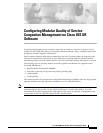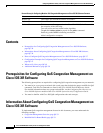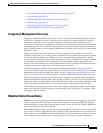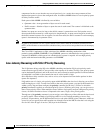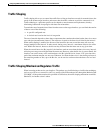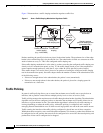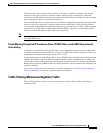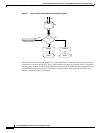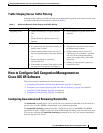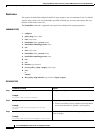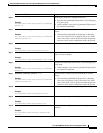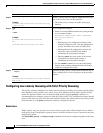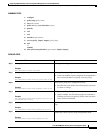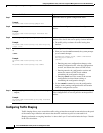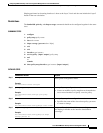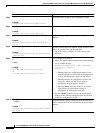
Configuring Modular Quality of Service Congestion Management on Cisco IOS XR Software
Information About Configuring QoS Congestion Management on Cisco IOS XR Software
QC-32
Cisco IOS XR Modular Quality of Service Configuration Guide
compensate for the excess data that was served previously. As a result, the average amount of data
dequeued per queue is close to the configured value. In addition, MDRR allows for a strict priority queue
for delay-sensitive traffic.
Each queue within MDRR is defined by two variables:
• Quantum value—Average number of bytes served in each round.
• Deficit counter—Number of bytes a queue has sent in each round. The counter is initialized to the
quantum value.
Packets in a queue are served as long as the deficit counter is greater than zero. Each packet served
decreases the deficit counter by a value equal to its length in bytes. A queue can no longer be served after
the deficit counter becomes zero or negative. In each new round, the deficit counter for each nonempty
queue is incremented by its quantum value.
Note In general, the quantum size for a queue should not be smaller than the maximum transmission unit
(MTU) of the interface to ensure that the scheduler always serves at least one packet from each nonempty
queue.
The Cisco CRS-1 implements a slight variation of the MDRR scheduling mechanism called
packet-by-packet MDRR (P2MDRR). Using P2MDRR, queues are scheduled after every packet is sent
compared to MDRR in which queues are scheduled after a queue is emptied. All non-high-priority
queues with minimum bandwidth guarantees use P2MDRR.
Low-Latency Queueing with Strict Priority Queueing
The LLQ feature brings strict PQ to the MDRR scheduling mechanism. PQ in strict priority mode
ensures that one type of traffic is sent, possibly at the expense of all others. For PQ, a low-priority queue
can be detrimentally affected, and, in the worst case, never allowed to send its packets if a limited amount
of bandwidth is available or the transmission rate of critical traffic is high.
Strict PQ allows delay-sensitive data, such as voice, to be dequeued and sent before packets in other
queues are dequeued.
LLQ enables use of a single, strict priority queue within MDRR at the class level, allowing you to direct
traffic belonging to a class. To rank class traffic to the strict priority queue, you specify the named class
within a policy map and then configure the priority command for the class. (Classes to which the
priority command is applied are considered priority classes.) Within a policy map, you can give one or
more classes priority status. When multiple classes within a single policy map are configured as priority
classes, all traffic from these classes is enqueued to the same, single, strict priority queue.
Through use of the priority command, you can assign a strict PQ to any of the valid match criteria used
to specify traffic. These methods of specifying traffic for a class include matching on access lists,
protocols, IP precedence, and IP differentiated service code point (DSCP) values. Moreover, within an
access list you can specify that traffic matches are allowed based on the DSCP value that is set using the
first six bits of the IP type of service (ToS) byte in the IP header.



